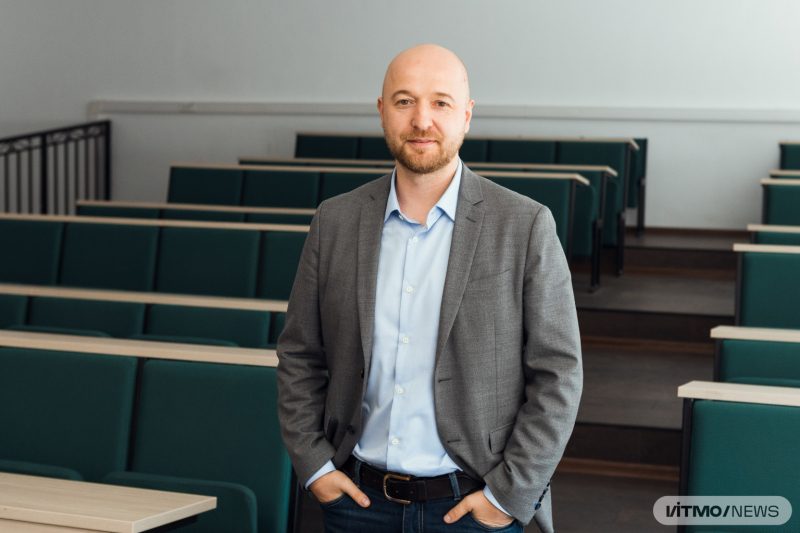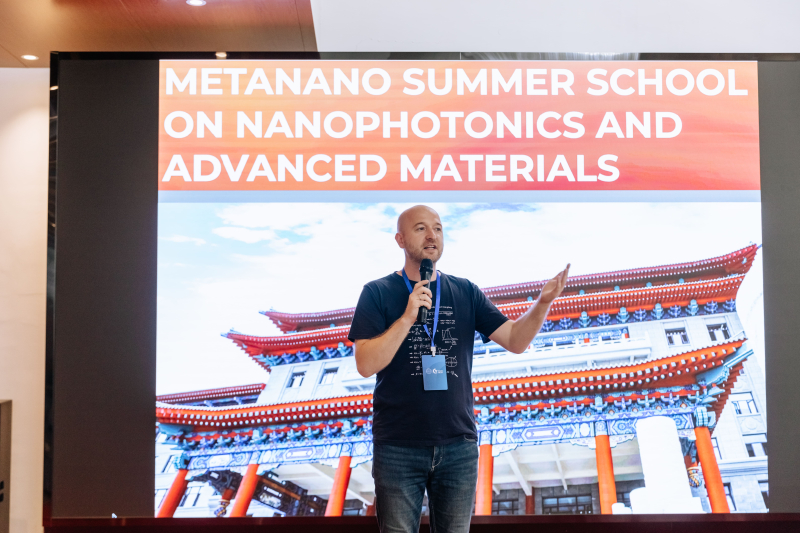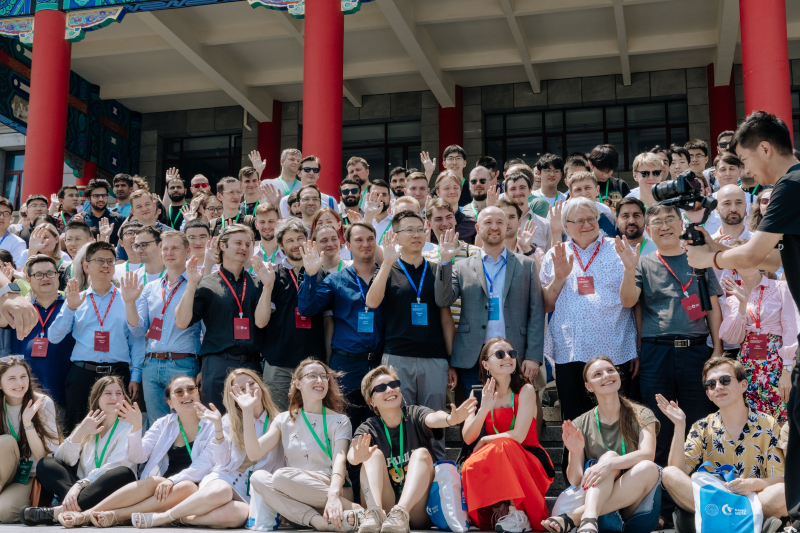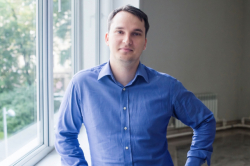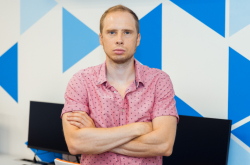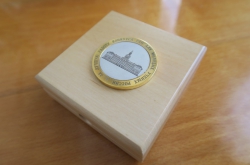Meet Andrey Bogdanov:
Field of study: Andrey Bogdanov studies theoretical nanophotonics and heads the project Nanophotonics as a Speedrun from Pupils to Advanced Researchers as part of ITMO’s 2030 Development Strategy.
Team: up to 25 people.
Project: The aim of the project is to train school students to become nanophotonics researchers by means of a lifelong education model and a project-based approach.
Finding yourself in science
I’m the first scientist in my family, so neither I nor my parents knew what it’s like to be a physicist until I transferred to the Presidential Physics and Mathematics Lyceum No. 239 in the ninth grade. Studying at the lyceum literally changed my world – we had plenty of classes on physics and mathematics, as well as humanities – the latter not in the least inferior to the former. That was the moment when I started to learn more consciously – I didn’t need to be pushed anymore, I did it all on my own now.
Most of all, I enjoyed physics and mathematics. I aced competitions in these subjects, which meant I was free to choose between several universities, including St. Petersburg State University and Peter the Great St. Petersburg Polytechnic University (SPbPU). Back then, the SPbPU’s Faculty of Physics and Technology was headed by Zhores Alferov, a Nobel Prize laureate in physics. Eventually, I opted for SPbPU because of the atmosphere and the fact that lots of my classmates were going to study there, too.
At the university, I strived to be among the top researchers, so I instinctively went for solid-state physics, which is closely linked to semiconductor physics. I studied solid-state physics during my Master’s studies at SPbPU and, later, during my PhD at the Ioffe Institute. At the latter, I was involved in the study of quantum-cascade lasers, which were first proposed by Prof. Robert Suris, my supervisor and a fellow of the Russian Academy of Sciences, in the 1970s. These lasers have long been commercialized and find diverse applications in various markets: they are used to monitor air and water pollution, as well as detect chemical hazards in foods or disease markers – in humans.
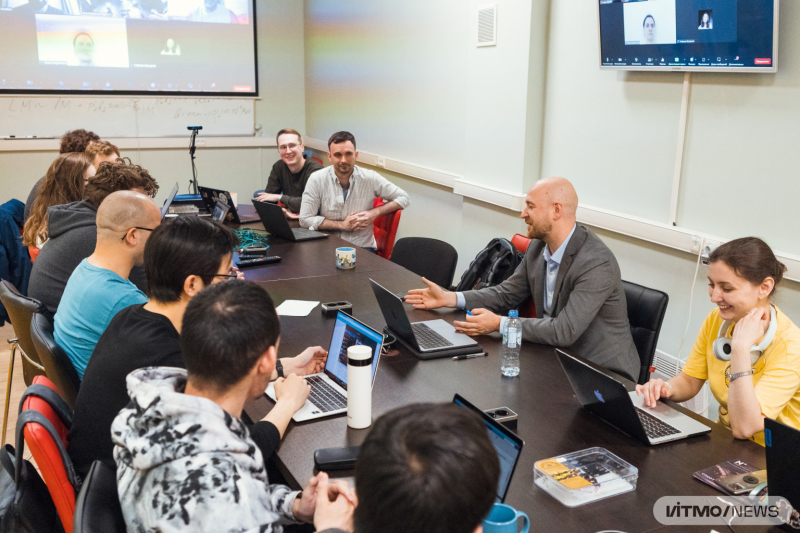
Andrey Bogdanov’s team. Photo by Dmitry Grigoryev / ITMO.NEWS
In 2012, I defended my thesis and received my PhD. At that time, I started to think about what I wanted to do next. A year before my graduation, ITMO opened a new metamaterials-focused laboratory, which attracted many of my colleagues – and myself, as well, eventually. Even before I joined the lab as a junior researcher in 2014, I attended seminars and participated in various meetings.
That was a turning point in my life; I found myself in an inspiring environment and with an abundance of academic and travel opportunities. I managed to go to Spain and Denmark and build a strong professional network – all during my time at ITMO. Thanks to this experience, I now can help my students to choose the right teams, conferences, and grants.
Read also:
Training young scientists
The first thing that springs to mind when school students hear about ITMO University is its Information Technologies and Programming Faculty, which has brought up several generations of top-notch programmers and champions of the International Collegiate Programming Contest (ICPC) and other programming contests. That being said, I want ITMO to be synonymous with physics, too, and for that to happen, we need to train top-tier principal investigators (PIs) – scientific leaders who can both manage teams and do cutting-edge research.
For this purpose, we proposed a lifelong learning model, at the core of which is a detailed guide that breaks down the steps to becoming a PI.
Just like our students, we also moved towards our goal step by step: first, we launched a PhD program, then Russian- and English-taught Master’s programs, and, finally, a Bachelor’s one, a couple years back. We opened Theoretical and Experimental Physics in 2021 and Wireless Technologies in 2022. Though the model seemed to be complete, there was one thing left – and these were schools. There are plenty of talented and motivated students there. But how could we, university lecturers, reach out to them?
One way is to deliver extra classes at school. That’s what I did. As a Bachelor’s student, I taught classes at the lyceum; when I was doing my Master’s, I continued teaching, though this time to university students. So, by the end of my PhD program, I had already been teaching for 10 years, which opened doors to many schools. Principals trusted me and my colleagues and invited us to deliver lectures for school students. Nevertheless, short-term initiatives couldn't drastically affect education, so we had to search for other formats.
A much-needed boost was ITMO’s 2030 Development Strategy. The moment it launched, I knew it was similar to what we had been doing for the last couple of years – and, above all, this was our chance to develop our ideas and find the resources to make them happen. As part of the strategy, a competition was organized that would provide opportunities for teams and individuals within a research- and project-based approach, whereas other scientific contests focused exclusively on fundamental or applied results. Hence, I applied for the contest without a second thought.
Read also:
Winning the competition gave us an opportunity to, in a sense, finalize our system of training PIs, from schools to PhD studies. Here’s an example of how it works. Kseniia Baryshnikova, currently a senior research associate at ITMO’s Faculty of Physics, finished the lyceum I did my teaching at and then enrolled in SPbPU, where I also delivered classes. And now we’re colleagues working on science projects side by side. The lifelong education model makes it possible for other school students to experience a similar path.
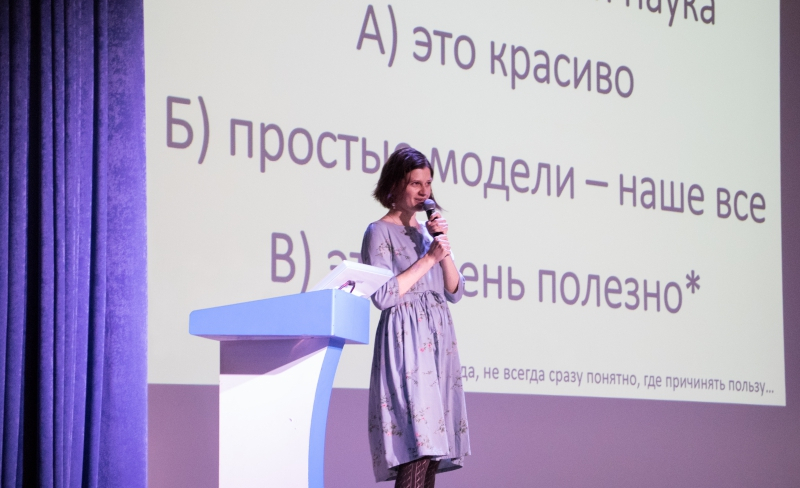
Kseniia Baryshnikova, too, often works with school students – she runs summer camps for students at ITMO’s School of Physics and Engineering. Credit: ITMO.NEWS
Nonetheless, here comes the question: “How can educators boost students’ interest in science?” The answer is not one, but several mechanisms, with one being summer science camps, where students can attend lectures and work on real-life projects in theoretical nanophotonics under the supervision of experts. That’s the key specialization of our group. Together with students, we investigate how to deploy high-quality nanoresonators and metasurfaces in nonlinear optics and biosensorics.
The supplementary education center Intellect has recently hosted a project school during which school students and researchers from ITMO’s School of Physics and Engineering worked on highly sensitive biological optic-fiber sensors based on surface plasmon resonance. The sensors will allow specialists to conduct complex biochemical analysis outside of laboratories and at a significantly lower cost.
Consequently, students can present the results of their research at major scientific events, like ITMO’s Congress of Young Scientists or Sakharov Readings, as well as publish their findings in scientific journals. Activities of that sort are a huge advantage for school students and can give them extra points when applying for ITMO’s programs.
All in all, we let school students learn more about being a physicist, as well as how to organize and conduct studies and prove that it’s possible to thrive in science, setting our own achievements as an example.
After graduation, students are free to make their own decisions. If they choose ITMO, they will already know what they want to do and will be well-prepared for research activities. During their training, they dive deep into science, publish papers in peer-reviewed journals, and do their internships abroad. A great example of this is our paper with Sergey Krasikov, now an employee at ITMO’s School of Physics and Engineering, that made it to the top 1% of the most cited papers on optics.
Read also:
Metaphotonics Review by ITMO Scientists Among Top 1% Most Cited Papers
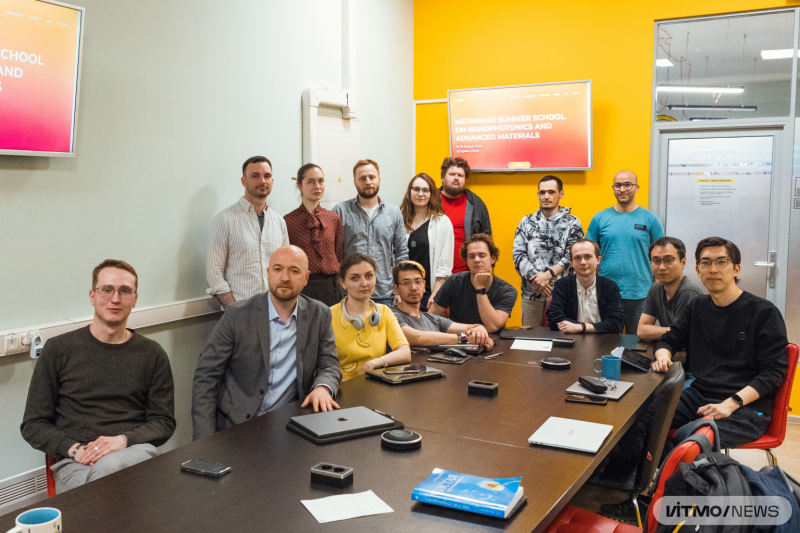
Andrey Bogdanov’s team. Photo by Dmitry Grigoryev / ITMO.NEWS
Opportunities for PIs at ITMO
ITMO University offers well-equipped classrooms, offices for PhD students and professors, and laboratories, as well as a holistic environment, which makes it clear that “everybody is equal here” isn’t empty words. Prospective and current students, PhDs, and professors comfortably co-exist at ITMO and feel that they can speak up and be heard. The environment is crucial, as it creates a feeling of community where anyone can talk to anyone. It’s hard to say what any conversation will yield in the end, but the number of results they produce is impressive. I can’t think of any other place in the world that can boast such a synthesis of science, education, and culture.
ITMO is currently holding an open call for research teams working at the cutting edge of science and technology. Winners will receive grants of up to 30 million rubles to establish their own laboratories at ITMO. For more details, visit this website.
